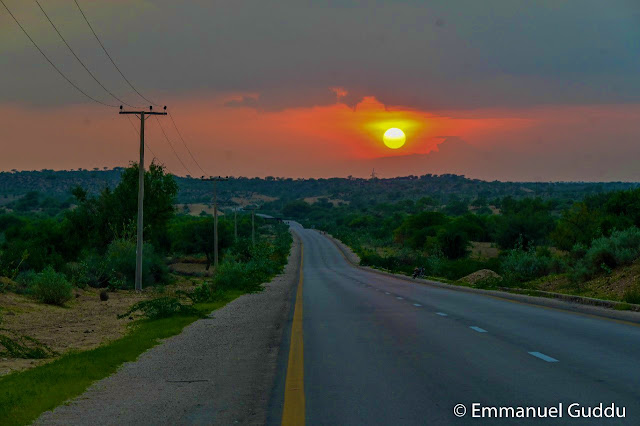Pakistan has seen unprecedented rains followed by massive floods in the current monsoon season. Hundreds of people have lost their lives and tens of thousands have been rendered homeless. After the unfolding of the tragedy, it's now time for renewal. New green shoots are sprouting in Thar desert, indicating the end of the long-running drought in Pakistan. The large Indus Basin aquifer has been significantly recharged. Groundwater has been replenished to a large extent for many years to come, raising hopes for more water for growing crops and raising livestock.
 |
| Sunset in Lush Green Thar Desert After Monsoon 2022. Credit: Emmanuel Guddu |
 |
Greening of Thar Desert in Sindh, Pakistan. Source: Emmanuel Guddu
The heavy monsoon rains will help to kick-start the sowing of major Kharif (autumn) crops including rice, cotton, sugarcane and corn after about a month's delay. “There was 40% less water available for the Kharif season (during May-June 2022),” an official of the Ministry of National Food Security and Research said while talking to The Express Tribune on Saturday. Earlier in March this year, Pakistan's Federal Committee on Agriculture (FCA) had said “for the Kharif year 2022, the water availability in canals head will be 65.84 million acre feet (MAF) against last year’s 65.08 MAF”. Recent rains have helped fill up major water reservoirs across the country. About 150,000 cubic feet per second of water is being released from Pakistan's largest Tarbela dam which is more than the combined irrigation needs of the two provinces. It is also generating over 3,000 MW of electricity, media reports. |
 |
Pakistan Monsoon Rainfall July 2022. Source: PMD
|
 |
| Pakistan Drought Monitor. Source: NDMC, PMD |
Pakistan Meteorological Department data shows that Pakistan has seen far more rainfall than normal. About 178 mm of rain has fallen in the country, an increase of 180.5% of normal for the month of July.
Recent satellite maps from the United States National Aeronautics and Space Administration (
NASA) confirm significant groundwater growth in Pakistan. The improvement becomes much more apparent when the latest map is compared with one from 2014.
Pakistan’s Indus Basin Irrigation System is the world's largest artificial groundwater recharge system, according to the World Bank. A network of canals dug since the 16th century has recharged the Indus Basin aquifer in Pakistan which now has about 1.2 million tube wells extracting 50 million acre feet of water every year. NASA satellite maps show that Pakistan is among the places worst affected by rapid depletion of groundwater. Improved groundwater management is crucial for a healthy, prosperous, and green Pakistan. It appears that the groundwater in the Indus Basin has been replenished to a large extent for many years to come, raising hopes for more water for farmers to grow crops to feed and clothe people and raise livestock.
Related Links:







You need to be a member of PakAlumni Worldwide: The Global Social Network to add comments!
Join PakAlumni Worldwide: The Global Social Network